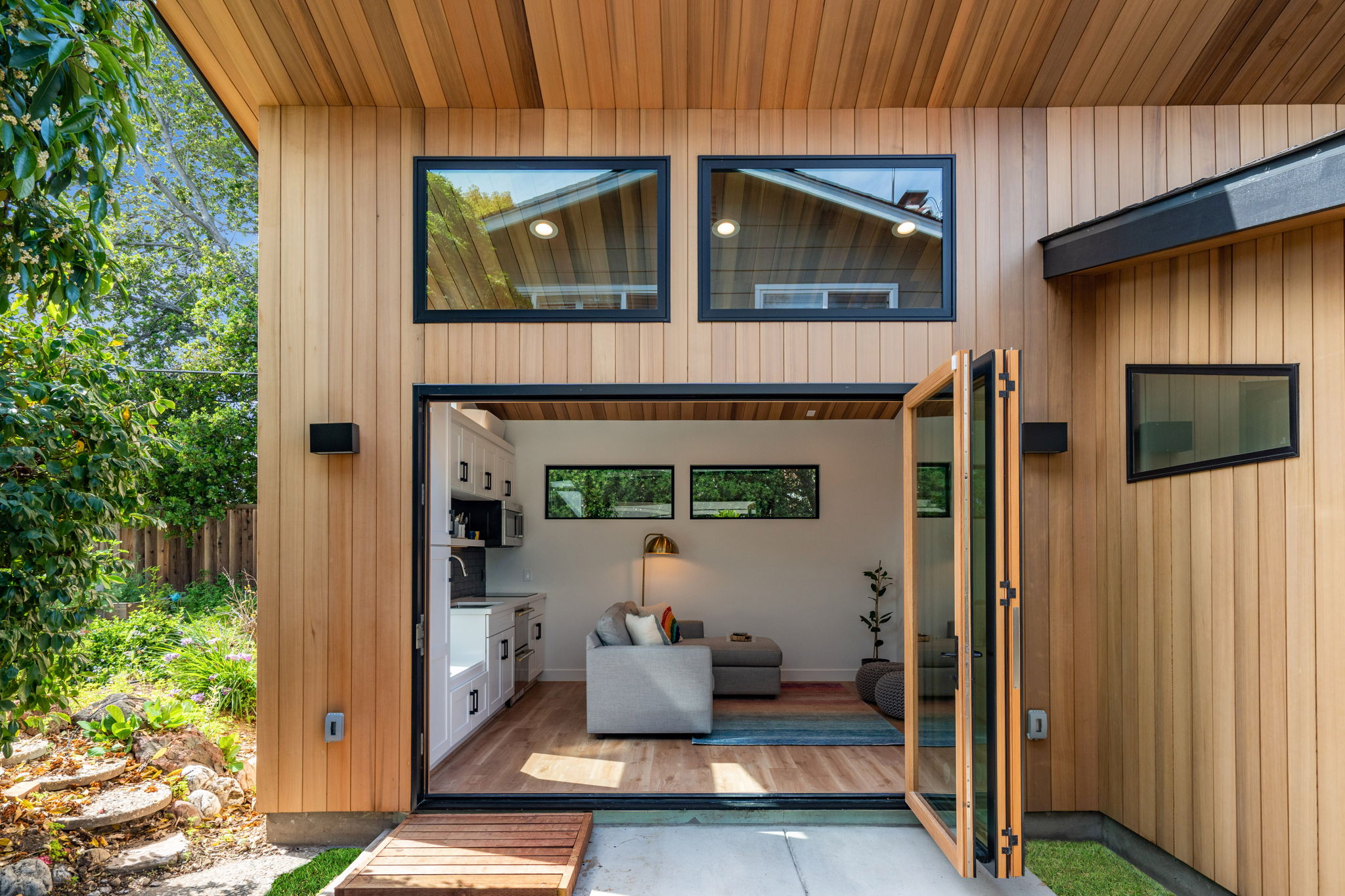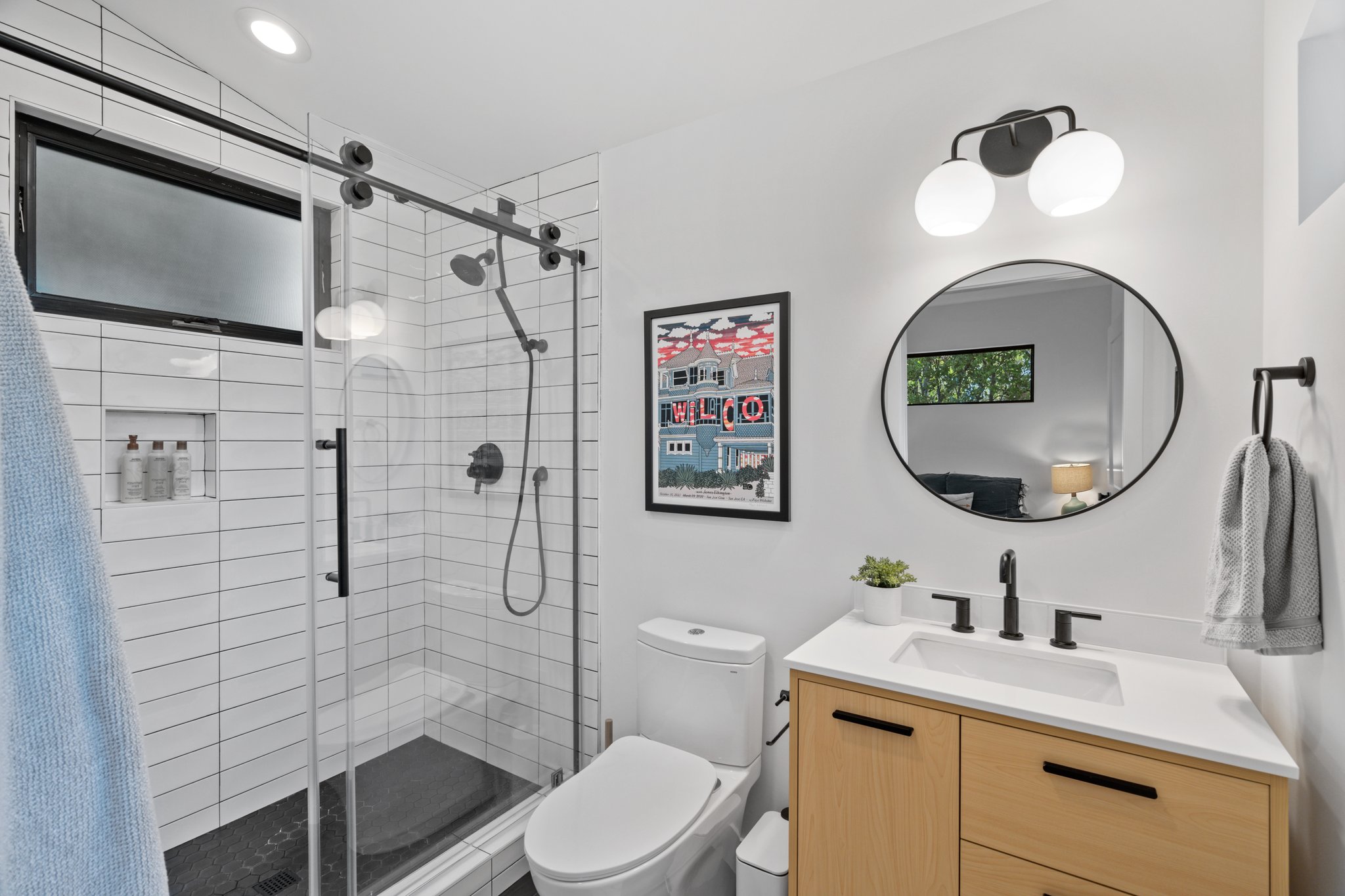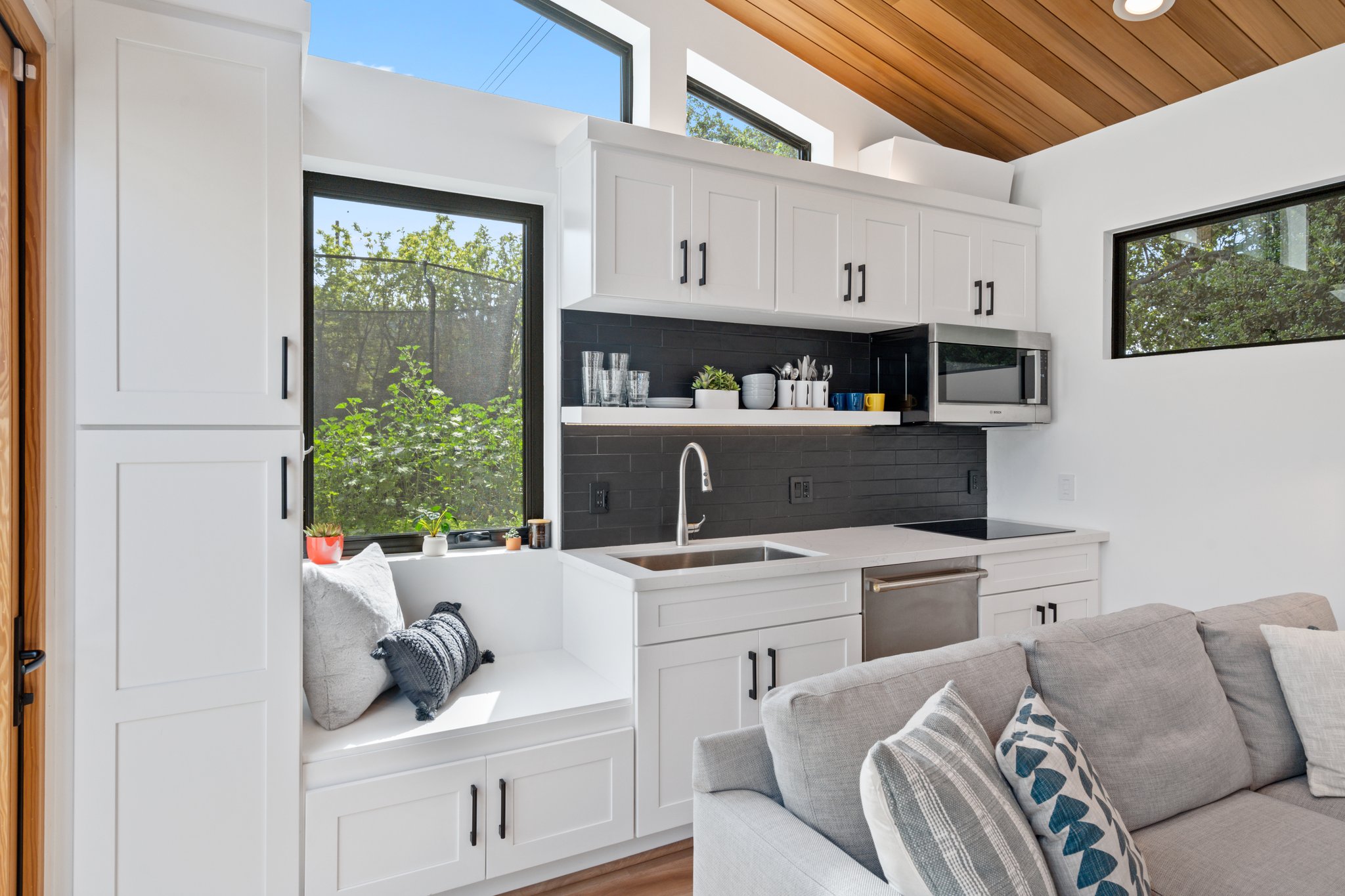Custom ADU Builders
An accessory dwelling unit (ADU) offers a way to create more livable space on your property. Whether you want to remodel, expand or build a new unit, bring your ADU design and construction vision to life with Valley Home Builders. As custom ADU builders, our in-house designers, architects and project management teams create aesthetically pleasing results to fit your lifestyle and goals. We are ADU builders in California committed to providing exceptional service.
What Are ADUs?
An ADU is an independent dwelling unit, also called a secondary suite, accessory apartment, mother-in-law apartment or granny flat. Accessory dwelling units are located on the same lot as a single-family home and can be attached or detached from the main structure of your house. Homeowners who choose to build ADUs enjoy the freedom of creating custom floor plans and incorporating tailored design choices to align with their property layouts and meet their needs. If you’re looking to build an ADU or do a home remodel, we can help you navigate the process.
Benefits of Accessory Dwelling Units
Instead of moving and purchasing new land, adding to your existing residence offers a cost-effective way to accommodate your needs. There are many benefits of ADUs, including:
- Increased property value: An ADU can significantly boost property value by providing additional living space.
- Flexible living arrangement: If you want to give teenagers some extra freedom, junior accessory dwelling units are a wonderful option.
- Private designated space: ADU builders can help you build your dream office or studio. An ADU can be the perfect solution for a home office, offering the benefit of being on your property while remaining separate from the main house.
- Space for guests: Create a new bedroom or guest room to welcome long-distance relatives or friends.
Popular ADU Projects
Valley Home Builders is your go-to ADU builder in California. We can remodel or expand your independent dwelling in compliance with local zoning laws and according to your desires, budget and needs. The most popular ADU projects include:
Backyard Cottages
Enjoy additional privacy and convenience in the comfort of a backyard cottage. Whether for a home office, yoga studio or workout space, a backyard cottage offers nearly endless opportunities to expand your living space. They are also a great option as the kids grow older and want to exercise more independence in a space of their own.
Guest Houses
Whether your guests will be staying overnight or indefinitely, you want to offer them spacious, private accommodations. A guest house can feature a variety of amenities, including a bathroom, kitchen and living space, so your visitors can enjoy the comforts of home as well as privacy. Parents or other relatives can also gracefully age in place in a separate guest house, giving everyone greater peace of mind.
Garage Conversions
Garage conversions are an affordable way to build an ADU because the foundation and basic infrastructure, like walls, electrical connections and the roof, are already there. Convert your garage into anything you like — for example, a home gym, art studio or even an indoor garden. With features like plumbing, electricity and windows for natural light, a garage conversion can truly transform your space.
Our ADU Services in the Bay Area
Valley Home Builders makes expanding, renovating or remodeling your space easy. Our team handles all the planning and task-related details from start to finish. With our in-house ADU design team, we can design and build the space you need to enhance your home and improve your living environment.
During a free consultation, our experts explore your ideas and develop a plan to bring your inspiration to life. We provide recommendations to suit your preferences and answer any questions you have. We also walk you through each design stage and discuss how an ADU construction company will make the vision come to life.
Once we have established your property specifics and requirements, our team of designers and architects will meet with you to propose ideas and design your accessory dwelling unit. Our accomplished interior designers will provide a few options to make the most of the space. When you are happy with all the design aspects, one of our project developers will meet with you to provide an exact estimate and timeline for your ADU construction process.
We have a customer portal so that you can stay updated throughout the process. The user-friendly system offers a way to view proposals, set up schedules, communicate with project managers, see progress pictures or videos and access payment plans as needed.
Why Choose Valley Home Builders?
Since 2005, Valley Home Builders has served homeowners in and around the San Francisco Bay Area. You can check our list of locations to find the area we serve nearest to you. Here are some benefits of working with us:
- Excellent rankings: Our company has a five-star rating from the Home Services Review and an A+ rating with the Better Business Bureau (BBB).
- Industry affiliations: We are National Association of the Remodeling Industry (NARI) members and follow their ethical codes.
- Award-winning designs: Our recognition for excellent service includes a Home Builder Digest’s 10 Best ADU Builders ranking and an Angie’s List Super Service Award.
- Customer-focused solutions: We aim to give you a solution to your problem and strive to provide value with every ADU design and construction project we undertake.
- Guaranteed quality: Our customers can rest assured with our one-year labor guarantee when they choose us as their design/build partner for their accessory dwelling units.
Build the Home of Your Dreams With an ADU Today
If you are looking for an award-winning custom ADU builder for your remodeling and expansion project proven to provide a stress-free home-building experience, look no further than Valley Home Builders. From planning to design, construction and project management, our team of experts will handle every aspect of your ADU build. Ready to create your dream ADU with Valley Home Builders? To get started, schedule a free consultation with our team!



View Our Different Platforms: